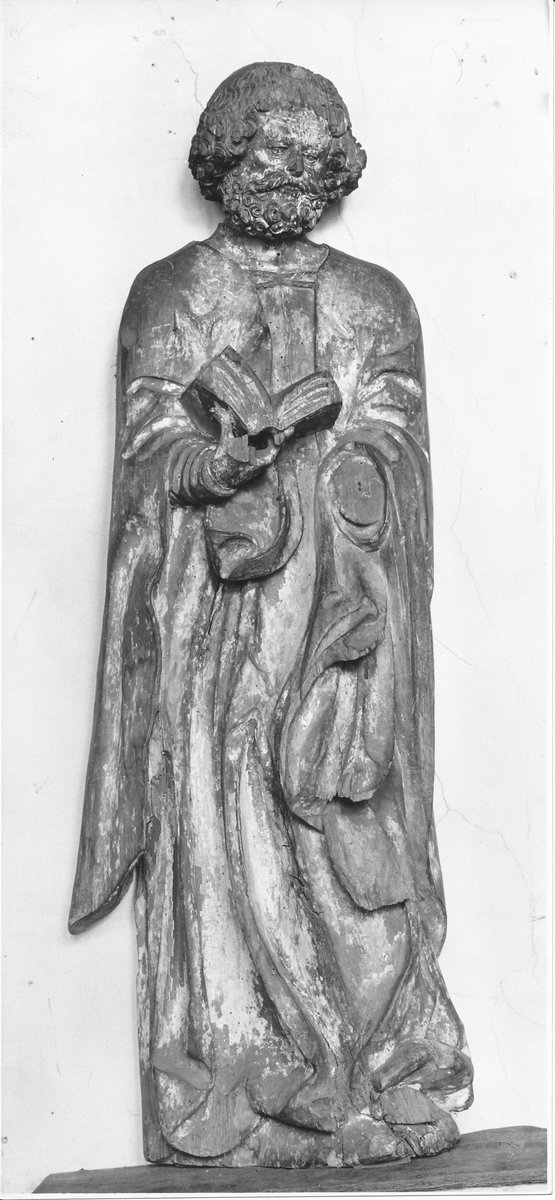
Apostle
Sculptures
| Artist | |
|---|---|
| Culture | Italian |
| Date | late 15th century |
| Object type | relief |
| Medium, technique | glazed terracotta |
| Dimensions | 77 × 49 × 15 cm, 65 kg |
| Inventory number | 53.647 |
| Collection | Sculptures |
| On view | Museum of Fine Arts, Second Floor, European Sculpture 1350-1800, Gallery 1 |
Luca della Robbia (1399/1400–1482) developed the glazed terracotta technique at the beginning of the 1440s. His terracotta reliefs were more durable than those made from stucco, a material used for architectural decorations. At the same
time, terracotta was less costly than marble, and so within a short time it became very popular. Majolica became the speciality of the Florentine workshop, led initially by Luca della Robbia and later by Andrea, his nephew. It received numerous commissions in the course of a century. The minutely detailed Pietà in Budapest, the only surviving version, was probably produced in Andrea della
Robbia’s workshop.
Balogh, Jolán, Katalog der ausländischen Bildwerke des Museums der bildenden Künste in Budapest, IV – XVIII. Jahrhundert: 1. Textband Bd. 1, Akadémiai Kiadó, Budapest, 1975, p. 62., no. 55.
Pope-Henessy, John, “Italian sculpture – Budapest and Paris”, Apollo 102.161-166 (1975), p. 474-475.
Dal Poggetto, Maria Grazia Ciardi Dupré, “Recensione – Jolán Balogh, Katalog der ausländischen Bildwerke der Museums der bildenden Künste in Budapest. IV-XVIII Jahrhundert Budapest, Akadémiai Kiadó, 1975 Vols. 2: I, Textband; II, Bildband.”, Prospettiva 8-11 (1977), p. 63-67.
Verrocchio Krisztusa/Verrocchio’s Christ, Szépművészeti Múzeum, Budapest, 2003, p. 72-73, no. 12.
This record is subject to revision due to ongoing research.